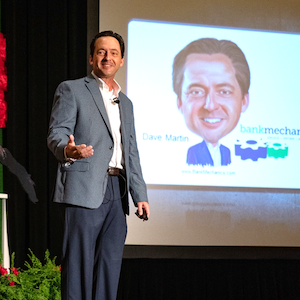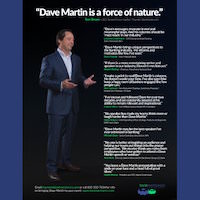 |
 |
Society honors its living conformists and its dead troublemakers. » Mignon McLaughlin
Can I Get An Upgrade?
I made an unplanned trip to New Orleans recently. Over a few days, I lost count of how many times I laughed at the absolute bipolarity of the service levels we encountered in places from airports to restaurants to discount stores to hospitals.
In some instances, you’d swear that these folks thought we were long lost family members. These were folks who were so nice to you, you felt guilty for not spending more money with them.
In some of the same places, we encountered folks so disinterested or belligerent that we thought we were being filmed on hidden camera as a prank.
And each encounter reinforced to me the factors that truly drive customers’ experiences.
One glaring instance occurred when I visited a large discount store. This was an older store in an economically-challenged part of town.
I was amazed at what I saw. The store had been remodeled and was a stunning contrast from the environment just outside its doors.
As I walked around, I found myself extremely impressed by everything I saw. Then, it came time to check out. As I walked up to the 20-items-and-under area, I saw one cashier working feverishly with a small line at her station. When I noticed that another check out lane had its light on, I looked around.
Standing about 20 feet away, in the middle of nothing, was a young woman looking at her feet. I watched for a few seconds as she sort of stood there, avoiding eye contact with anyone. I was standing third in the line I had chosen.
I called out, “Mam, is this check-out lane yours?” She turned and said, “Uh… yeah.” And then she turned away again. I walked away from the line I was in and up to that lane. She looked back, smirked, and slowly walked over to scan my items.
She never uttered a word and seemed upset that I had ruined her hiding-in-plain-sight strategy.
I walked away from that store wanting to find the manager to point out that the millions of dollars they spent on truly impressive upgrades were being wasted on any customer using check-out lane #3.
The impression she made trumped all of the others.
Whether or not you offer the most impressive branch facilities in your market, never lose sight that the strongest impressions are made by your “moving parts” – otherwise known as your employees.
What impressions will you make on customers today?
No Really, It's Not About You
One of the upsides of growing up in a rural area was that we never had to wonder about where we were going to school. There was one per town.
These days, we live in an area in which drunken leprechauns meet annually to throw darts and shoot dice to make zoning and staffing decisions in our schools. (I’ve never seen the process, but I can only imagine that’s how they’ve been doing it.)
Spurred by recent smoke-signals, we’ve begun to plan our next move. We’ve researched many Houston-area communities and have begun narrowing our choices. We recently took a ride out to a development on our short list.
As we walked up to the first home, an energetic lady called out, “Hello!” from inside of the home’s office.
She quickly came out and introduced herself. After asking our names and a bit about where we were from, she excitedly told us that she lives not far from our current home.
Over the course of the next 15 minutes, we learned about her mom, her deceased dad, her husband, her past jobs, where she went to school, her hobbies, and how her kids were doing in school.
After poking around a bit, I asked specific questions about which lots were available, which were opening up for “Phase 2” in three months, which homes were ready to move into, etc. She answered the questions pretty well but relied mostly on giving us a glossy folder with maps and house plans, along with her business card.
She told us, “Don’t hesitate to call me with any more questions!”
As we walked out, I kidded with my wife that we knew her life story, but she didn’t learn all that much about us. We have her contact information, yet she didn’t take any from us to follow-up. In the salesperson/prospect relationship, we seemed to have our roles reversed.
I found myself reflecting on advice I’ve often given in sales seminars. If you find yourself standing in front of a customer and the conversation seems to center around you, what you think, what you want, etc., that customer is already gone. Sure, their body may still be in front of you, but their minds are somewhere else.
If we want people to be interested in us, we need to actually show interest in them.
Where will your interest be when the next customer walks in?









